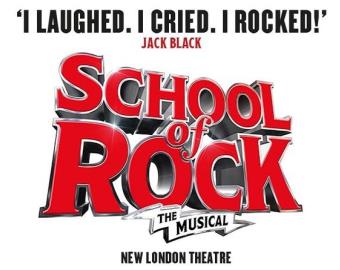
Palladium Theatre
Londres - Angleterre
Construction: 1910
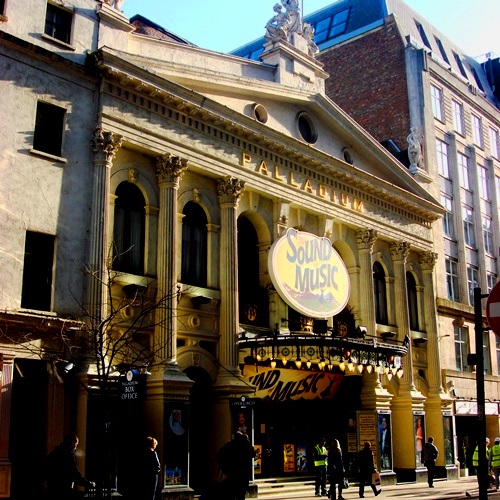
Topologie du théâtre
Nombre de salles actives: 1
Salle 1: (2291) 1910 - Actif
Accès
En métro: Oxford Circus
En bus: 1, 3, 6, 7, 8, 12, 13, 15, 16A, 23, 25, 53, 73
Adresse: 8, Argyll Street, London, W1F 7TF
Evolution
Bâtiment: 1864. Argyll House, which previously occupied the site, is demolished / 1868. Corinthian Bazaar opens above commercial wine cellars / 1871. Hengler’s Grand Cirque opens / 1895. Lease sold to National Skating Palace Ltd / 1908. Lease passes to Walter Gibbons / 1910. Palladium Theatre, designed by Frank Matcham, opens on Boxing Day / The building closed in 1939 and was set to be demolished, but it was saved and converted into a Mecca Ballroom in 1951 and then restored to theatrical use in 1996 by Holohan Architects Statutorily Listed Historic Building: Grade II*
Nom: Corinthian Bazaar / National Skating Palace / The Palladium
Propriétaire(s)
Really Usefull Group
Remarquable
Classical temple-llke façade to Argyll Street - The interior, a triumph of design and decoration.

2291
1910 - Actif
Sir Anthony Eden was Prime Minister, and Dwight D. Eisenhower was 34th President of the United States when, at 7pm on 25 September 1955, Independent Television broadcast the first Sunday Night at the London Palladium show, hosted by Tommy Trlnder and staring Gracie Fields and Guy Mitchell. Post-war austerity lingered well into the 1950s, and the show’s quality and lavish presentation (even in black and white) caught the public’s imagination to a degree that ensured its continuation at intervals to the turn of the millennium. Here were stars who, until they appeared in those early broadcasts, had so often been heard only on gramophone records and seen only in publicity photographs and magazines. Compères succeeding Tommy Trinder, such as Bruce Forsyth, Norman Vaughan and Larry Grayson, were to become household names; and the weekly finale, as the cast took its curtain call on the stage revolve, made early television magic and ensured that the London Palladium would become probably the most famous variety theatre In the world.
Seeing the building on television, it would be difficult to imagine it as anything but a focal point in the heart of West End theatreland - but this is far from the case. The theatre Is situated on the east side of Argyll Street, a short, narrow link-road between Oxford Street to the north and Great Marlborough Street to the south, running parallel with Regent Street. The area was undeveloped until 1670, when houses started to spring up either side of nearby Kingly Street, but it was not until the 1730s that Argyll Street and Little Argyll Street (opposite the theatre), named after John Campbell, 2nd Duke of Argyll, were laid out. Little remains of the original development apart from remnants of No. 8 Argyll Street, and continuous redevelopment has left the east side of the street with an Irregular roofline in which a number of particularly tall buildings have reduced the visual impact of the theatre on the townscape. Close to the theatre two blue plaques, mounted by the Greater London Council, record the residence at No. 8 of the American writer Washington Irving and, at No. 10, Major General William Roy, founder of the Ordnance Survey.
Of particular architectural merit in the street is Palladium House (formerly Ideal House, 1928), which occupies the eastern angle between Argyll Street and Great Marlborough Street. Designed by Gordon Jeeves and Raymond Hood as a miniature of Hood’s National Radiator Corporation building in New York, it rises as a sheer black structure faced in Swedish granite, relieved only by the sparing use of cast bronze in yellow, gold, green and orange lotus and geometric patterns, mainly at a high level, resulting in an overall Egyptian feel.
On the site of the London Palladium stood Argyll House, home of the 2nd Duke until his death in 1743. The house remained in the family until 1808, when the 6th Duke sold it to the long-lived 4th Earl of Aberdeen. When he died in 1860, his family auctioned the house two years later, and it was sold again in 1863; the following year it was demolished and deeply excavated to accommodate a large commercial wine cellar owned by George Haig. Covering the cellar from 1868 was the Corinthian Bazaar, named after its columned façade on Argyll Street which now, although altered, still forms the principal façade to the theatre. The bazaar was a failure, and its successor, the Palais Royal Exhibition Rooms, was bought out around 1870 by F. C. Hengler. Hengler, an established circus owner and administrator, was being consulted on the conversion of the building to circus use, utilizing the Argyll Street frontage, with some rearrangement, as its entrance. In spite of its undisputed popularity Hengler’s Grand Cirque, along with Nos. 6 and 7 Argyll Street, failed to meet a reserve of £65,000 when they were put up for auction in 1883 by G. A. Haig & Co. When Haig was unable to sell, Hengler took part of the lease and engaged architect C. J. Phipps to improve his circus building, which was achieved by adding two galleries and a stage. After Hengler's death in 1887 the circus continued until 1895 when the National Skating Palace Ltd took over the building for four years.
In the early 1900s an attempt was made, with little success, to revive the circus, but in 1909 architect Frank Matcham was commissioned by lessee Walter Gibbons to design the Palladium, a variety theatre on a grand scale, at a final cost of some £250,000 (probably well in excess of £10 million In today’s terms), exceeding the original estimate by some £50,000.
The cream-painted seven-bay pedimented frontage to the theatre, retained from the Corinthian Bazaar, has a classical temple-like quality. Three central bays form the main entrance at street level, with an open loggia above. To step up into the building from the undistinguished street into the white, gold and marble of the vestibule and staircase with their prolific 18th-century and rococo detailing, Is in itself to experience a piece of true theatre. On the north side of the main entrance a corridor of nine cross-vaulted bays gives access to the advance-booking hall, which would amply accommodate a small bank.
The magnificent two-tier auditorium is a triumph of design, In a French rococo style, decorated originally In a delightful white, gold and pink colour scheme. Behind the proscenium arch, and under the stage was housed, until 2002, the framework of the revolve, which contributed so much to the Sunday- night magic, complete with its mercury- flask rectifiers, all dating from 1936. The space Is presently occupied by a set of 21st-century machinery.
In Great Marlborough Street, next to the former Marlborough Street Magistrates’ Court, and on the site of the Argyll Baths, are the untidy but spacious stage-door approach and the dressing-room block.
On Boxing Day 1910 this great variety theatre opened, with tea being provided in the Palm Court at the rear of the stalls, accompanied by ’lady musicians in Pompadour gowns’. A great Innovation was the installation of box-to-box telephones, early precursors to the mobile phone, plus the additional convenience of an in-house hairdresser's salon. This was the world of the Folies Bergères, the Crazy Gang, Barnum, La Cage aux Folles, Joseph and His Amazing Technicolour Dreamcoat and The King and I. The list of stars who have performed here is endless, but It includes Judy Garland, Duke Ellington, Sammy Davis Jnr, Ginger Rogers and Margot Fonteyn.
1864. Argyll House, which previously occupied the site, is demolished / 1868. Corinthian Bazaar opens above commercial wine cellars / 1871. Hengler’s Grand Cirque opens / 1895. Lease sold to National Skating Palace Ltd / 1908. Lease passes to Walter Gibbons / 1910. Palladium Theatre, designed by Frank Matcham, opens on Boxing Day / The building closed in 1939 and was set to be demolished, but it was saved and converted into a Mecca Ballroom in 1951 and then restored to theatrical use in 1996 by Holohan Architects Statutorily Listed Historic Building: Grade II*
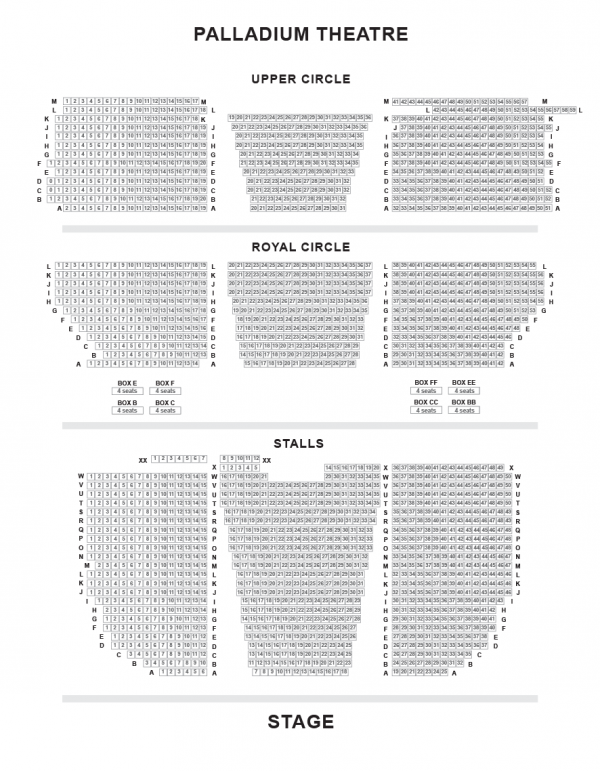
Infos complémentaires:
The large stalls section of the theatre is both wide and deep, with 50 seats per row towards the back. The seats are divided into three sections by aisles running the length of the auditorium, providing comfort for those on the end of each row and making the space feel less claustrophobic. The Circle overhang does not start until halfway back, meaning the back of the stalls has a limited view of the top of the stage; a factor which is reflected in the price structure, although doesn't take away too much from the performance.
Seat Plan recently sat in the front section of the stalls which did mean some of the show was not always visible, so if you are visiting with children we would advise to sit a bit further back. Staying as close to the centre aisle as possible is always advisable as due to the curvature of the auditorium you can feel quite angled.
The Royal Circle is the first tier and is divided into three separate sections by aisles running the length of the seats. This section is by far the best in the theatre and offers excellent views from most seats. The centre section provides the best all-around view of the stage and sets and feels most engaged with the production. The overhang of the Upper Circle doesn't cause too much of a problem, and you still feel connected to the show even towards the back.
The Upper Circle is slightly larger in size than the Royal Circle, but is laid out in a similar way in three distinct sections. It is in this section that the curve of the auditorium mostly affects; meaning seats towards the edge of each row can become restricted. The safety bar can obstruct the first two rows, and this is reflected in the price structure. The leg room towards the centre of these rows can also be a negative factor for some audience members. Having said that, the front row does feel connected to the action and despite the bar offer the best value for money in the theatre, and Seat Plan have enjoyed many a performance from these seats. After the first five rows the height and size of the theatre really start to show and you can feel disconnected from the action.
Corinthian Bazaar / National Skating Palace / The Palladium
Classical temple-llke façade to Argyll Street - The interior, a triumph of design and decoration.
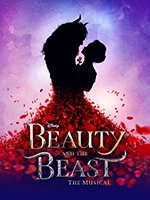
Musical
Revival
39) Beauty and the Beast (Revival)
Joué durant 2 mois 3 semaines
Première preview: 24 June 2022
Première: 24 June 2022
Dernière: 17 September 2022
Compositeur: Alan Menken •
Parolier: Howard Ashmand • Tim Rice •
Libettiste: Linda Woolverton •
Metteur en scène: Matt West •
Chorégraphe:
Avec: Shaq Taylor (Beast), Courtney Stapleton (Belle), Gavin Lee (Lumiere), Tom Senior (Gaston), Sam Bailey (Mrs Potts), Nigel Richards (Cogsworth), Martin Bell (Maurice), Samantha Bingley (Wardrobe), Emma Caffrey (Babette), Louis Stockil (Le Fou), Richard Astbury, Sarah Benbelaid, Jake Bishop, Pamela Blair, Liam Buckland, Jasmine Davis, Matthew Dawkins, Autumn Draper, Daisy Edwards, Alyn Hawke, George Hinson, Jennifer Louise Jones, Bronte Lavine, Thomas-Lee Kidd, David McIntosh, Aimee Moore, Sam Murphy, Ashley-Jordon Packer, Emily Squibb, Grace Swaby, India Thornton, Rhys West
Commentaire:
Presse:
Plus d'infos sur cette production:
Plus d'infos sur ce musical
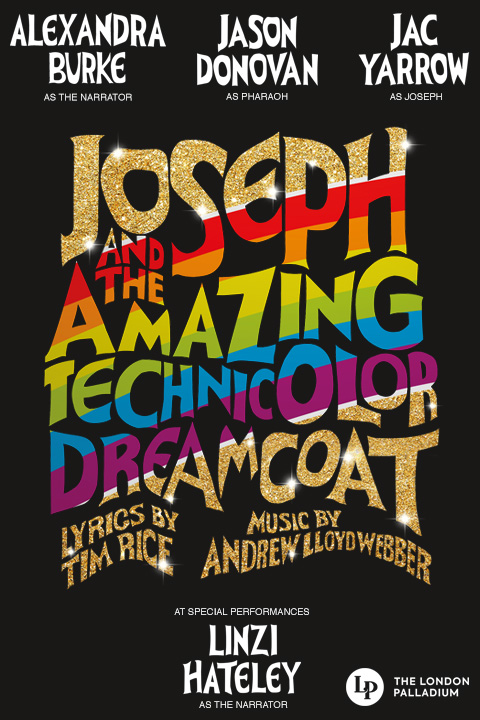
Musical
Revival
38) Joseph and the Amazing Technicolor Dreamcoat (Revival)
Joué durant 1 mois 3 semaines
Première preview: 12 July 2021
Première: 12 July 2021
Dernière: 05 September 2021
Compositeur: Andrew Lloyd Webber •
Parolier: Tim Rice •
Libettiste:
Metteur en scène: Laurence Connor •
Chorégraphe: Joanne Hunter •
Avec: Alexandra Burke (The Narrator), Linzi Hateley (Narrator - some performances), Jac Yarrow (Joseph), Jason Donovan (Pharaoh), Steffan Lloyd Evans (Reuben), Bobby Windebank (Simeon), Femi Akinfolarin, Jabari Braham, Gemma Buckingham, Thalia Burt, Jasmin Colangelo, Jonathan Cordin, Francessca Daniella-Baker, Alexander Day, Andre Fabien Francis, Llandyll Gove, Abigayle Honeywill, Blythe Jandoo, Danny Nattrass, Perry O'Dea, Georgina Parkinson, Emily-Ann Potter, Jon Reynolds, Rochelle Sherona, Katie Singh, Callum Train, Ava Belle Alexander (some dates), Toby Byers (some dates), Mei Chiu (some dates), Esme Connolly (some dates), Hattie Connolly (some dates), Alinah Dagpin (some dates), Amelie Davison (some dates), Josselyn Ospina Escobar (some dates), Kaylenn Aires Fonseca (some dates), Noah Swer Fox (some dates), Bella Harding (some dates), Amber Hodder (some dates), Rafferty Ison (some dates), Holly Jade Roberts (some dates), Harry Jelley (some dates), Livi Kent (some dates), Tamar Laniado (some dates), Charlie McGonagle (some dates), Isabelle Mullally (some dates), Edesiri Paula Okpenerho (some dates), Amy Osborn (some dates), Millie Playle (some dates), Riley Plummer (some dates), Teddy Probets (some dates), Austin Riley (some dates), Harrison Skinner (some dates), Ethan Sokontwe (some dates), Ellis Sutherland (some dates), Charlie Tumbridge (some dates), Lilli Watkins (some dates)
Commentaire:
Presse:
Plus d'infos sur cette production:
Plus d'infos sur ce musical
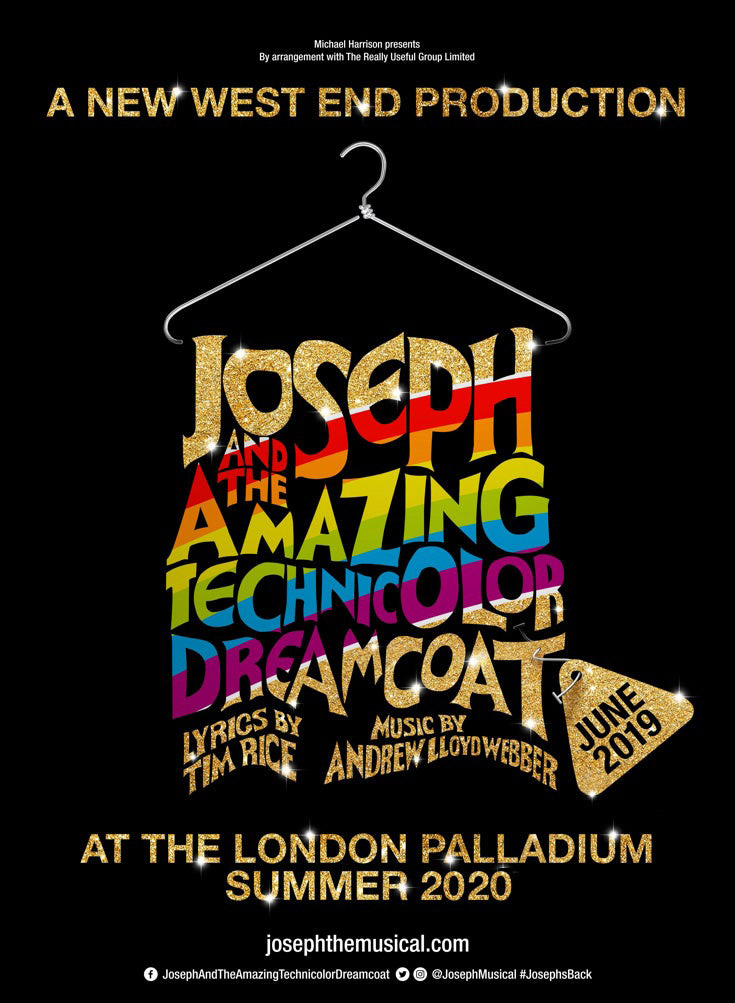
Musical
Revival
37) Joseph and the Amazing Technicolor Dreamcoat (Revival)
Joué durant 1 mois 3 semaines
Première preview: 02 July 2020
Première: 16 July 2020
Dernière: 06 September 2020
Compositeur: Andrew Lloyd Webber •
Parolier: Tim Rice •
Libettiste:
Metteur en scène: Laurence Connor •
Chorégraphe: Joanne Hunter •
Avec: Jason Donovan, Jac Yarrow
Commentaire: Andrew Lloyd Webber and Tim Rice’s multi-award winning musical returns to The London Palladium for a strictly limited run in summer 2020!
Following a premiere at the Edinburgh International Festival produced by the Young Vic in 1972, the musical transferred to the West End the following year. The next major production in London came in 1991, when Jason Donovan took what was to be a career-defining role at the London Palladium.
Various touring productions have played London over the last few decades, but the last major run was in 2007, when a revival of the London Palladium production opened at the Adelphi Theatre. (plus)
Presse:
Plus d'infos sur cette production:
Plus d'infos sur ce musical

Musical
Original
36) Fermeture COVID (Original)
Joué durant 1 an 4 mois
Première preview: 16 March 2020
Première: 16 March 2020
Dernière: 19 July 2021
Compositeur:
Parolier:
Libettiste:
Metteur en scène:
Chorégraphe:
Avec:
Commentaire: Tous les théâtres anglais ont dû fermer dès le 16 mars 2020 suite à la pandémide de COVID… (plus)
Presse:
Plus d'infos sur cette production:
Plus d'infos sur ce musical
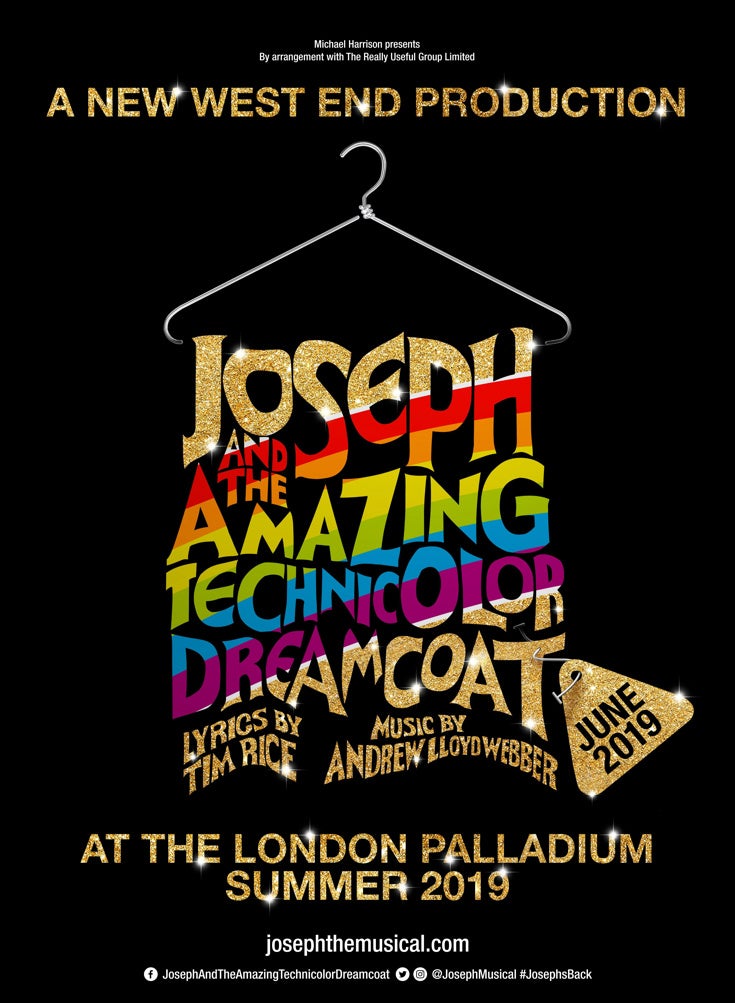
Musical
Revival
35) Joseph and the Amazing Technicolor Dreamcoat (Revival)
Joué durant 1 mois 4 semaines
Première preview: 27 June 2019
Première: 11 July 2019
Dernière: 08 September 2019
Compositeur: Andrew Lloyd Webber •
Parolier: Tim Rice •
Libettiste:
Metteur en scène: Laurence Connor •
Chorégraphe: Joanne Hunter •
Avec:
Commentaire: Jac Yarrow, a recent graduate from theatre school ArtsEd, makes his professional debut as the title character. He joins the ranks of other actors to have previously appeared in Joseph and the Amazing Technicolor Dreamcoat include Lee Mead, Jason Donovan, Donny Osmond, Philip Schofield, Stephen Gately and Joe McElderry. (plus)
Presse:
Plus d'infos sur cette production:
Plus d'infos sur ce musical
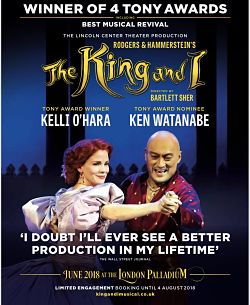
Musical
Revival
34) King and I (The) (Revival)
Joué durant 2 mois 4 semaines
Première preview: 21 June 2018
Première: 03 July 2018
Dernière: 29 September 2018
Compositeur: Richard Rodgers •
Parolier: Oscar Hammerstein II •
Libettiste: Oscar Hammerstein II •
Metteur en scène: Bartlett Sher •
Chorégraphe:
Avec: Kelli O'Hara, Ken Watanabe, Ruthie Ann Miles (Lady Thiang), Dean John-Wilson (Lun Tha), Na-Young Jeon (Tuptim).
Commentaire:
Presse:
Plus d'infos sur cette production:
Plus d'infos sur ce musical
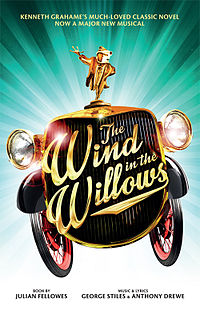
Musical
Original
33) Wind in the Willows (The) (version Stiles) (Original)
Joué durant 2 mois 1 semaine
Première preview: 17 June 2017
Première: 29 June 2017
Dernière: 09 September 2017
Compositeur: George Stiles •
Parolier: Anthony Drewe •
Libettiste: Julian Fellowes •
Metteur en scène: Rachel Kavanaugh •
Chorégraphe: Aletta Collins •
Avec: Rufus Hound (Toad)
Commentaire:
Presse:
Plus d'infos sur cette production:
Plus d'infos sur ce musical

Pantomime
Revival
32) Cinderella (Revival)
Joué durant 1 mois
Première preview: 09 December 2016
Première: 14 December 2016
Dernière: 15 January 2017
Compositeur: *** Divers •
Parolier: *** Divers •
Libettiste: *** Divers •
Metteur en scène: Michael Harrison • Nick Thomas •
Chorégraphe: Andrew Wright •
Avec: Paul O’Grady (The Wicked Stepmother), Amanda Holden (The Fairy Godmother), Julian Clary (Dandini), Lee Mead (Prince Charming), Paul Zerdin (Buttons), Nigel Havers as (Lord Chamberlain), Count Arthur Strong (Baron Hardup)
Commentaire: Avec un cast de 32 artistes-plateau. (plus)
Presse:
Plus d'infos sur cette production:
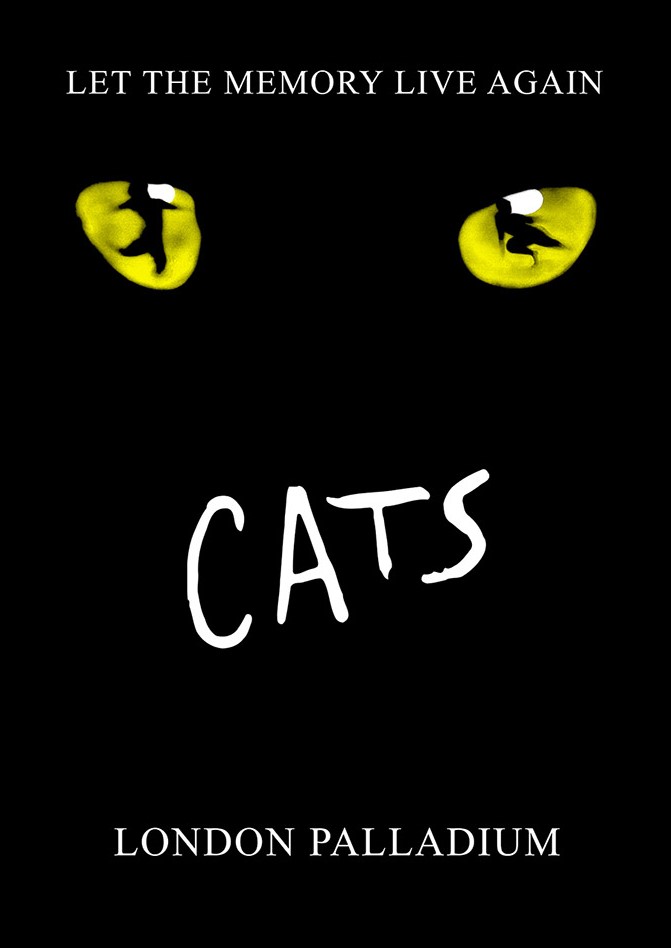
Musical
Revival
31) Cats (Revival)
Joué durant 2 mois 1 semaine
Première preview: 23 October 2015
Première: 27 October 2015
Dernière: 02 January 2016
Compositeur: Andrew Lloyd Webber •
Parolier: T.S. Eliot • Trevor Nunn •
Libettiste: Andrew Lloyd Webber • Gillian Lynne • Trevor Nunn •
Metteur en scène: Trevor Nunn •
Chorégraphe:
Avec: Beverley Knight (Grizabella), Jack Butterworth (Rumpus/Alonzo), Danielle Cato (Cassandra), Javier Cid (Macavity/Admetus), Luke Cinque-White (Carbucketty), Emma Lee Clark (Bombalurina), Jon-Scott Clark (Bill Bailey), Gabrielle Cocca (Tantomile), Harry Francis (Mungojerrie), Tarryn Gee (Jemima), Evan James (Skimbleshanks), Matt Krzan (Munkustrap), Georgie Leatherland (Rumpelteazer), Adam Linstead (Old Deuteronomy), Paul F Monaghan (Gus/Growltiger/Bustopher Jones), Jane Quinn (Jennyanydots), Mark John Richardson (Quaxo/ Mistoffelees), Clare Rickard (Jellylorum), Jordan Shaw (Pouncival), Hannah Kenna Thomas (Victoria/ White Cat), James Titchener (Coricopat), Marcquelle Ward (Tugger) and Anna Woodside (Demeter). Swings: Megan Armstrong, Lindsay Atherton, Lucy Brushett, Oliver Ramsdale, Alex Pinder and Barry Haywood.
Commentaire: Reprise de la version de l'année précédente avec Beverley Knight dans le rôle de Grizabella. (plus)
Presse: "It’s Knight’s third musical on the trot and she is absolutely wonderful...singing with touching sensitivity and nuanced musicality rather just belting it out." Rupert Christiansen for The Telegraph
"Beverley Knight gets her claws into the part." Sam Marlowe for The Times
Plus d'infos sur cette production:
Plus d'infos sur ce musical
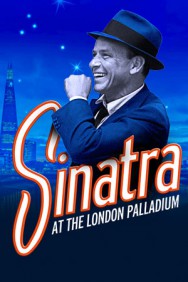
Spectacle
Revival
30) Sinatra at the London Palladium (Revival)
Joué durant 2 mois 3 semaines
Première preview: 10 July 2015
Première: 20 July 2015
Dernière: 10 October 2015
Compositeur: *** Divers •
Parolier: *** Divers •
Libettiste: *** Divers •
Metteur en scène: David Gilmore •
Chorégraphe:
Avec: Alistair Postlethwaite, Amy Hollins, Anabel Kutay, Ashley Nottingham, Aston Newman Hannington, Bryony Laura Whitfield, Charis O'Connor, Faye Best, Francis Haugen, Gemma Whitelam, James Revell, Jamie Firth, Liam Paul Jennings, Lucy Banfield, Matt Holland, Niall Swords, Nicola Coates, Rahcel Ensor, Christopher Black, Aaron James.
Commentaire: In his centenary year, Frank Sinatra will be returning to the London Palladium, 65 years after he made his UK debut on the same stage in 1950. Using rare or never before seen footage of the legend himself, a 24 piece orchestra and sensational live dancing Sinatra is an extraordinary new multi-media concert celebrating of one of the world’s greatest entertainers. (plus)
Presse: "If you were cynical about it, you might find it hard to watch for very different reasons. The narrative was inevitably sentimental and hagiographic, and there was something discombobulating about the collision of two different eras of entertainment." Neil McCormick for The Telegraph
"We may get a hazy impression of his character, but his technique is right under the microscope. It’s an opportunity to savour the legendary Sinatra voice — smooth and seductive, with an edge of mischief." Henry Hitchings for The Evening Standard
Plus d'infos sur cette production:
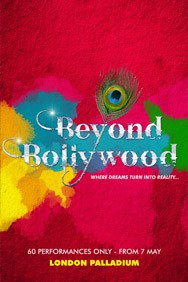
Musical
Original London
29) Beyond Bollywood (Original London)
Joué durant 1 mois 2 semaines
Première preview: 08 May 2015
Première: 11 May 2015
Dernière: 27 June 2015
Compositeur: *** Divers •
Parolier: *** Divers •
Libettiste: *** Divers •
Metteur en scène: Rajeev Goswami •
Chorégraphe:
Avec:
Commentaire: The UK premiere of Beyond Bollywood following sold out Mumbai dates. (plus)
Presse:
Plus d'infos sur cette production:
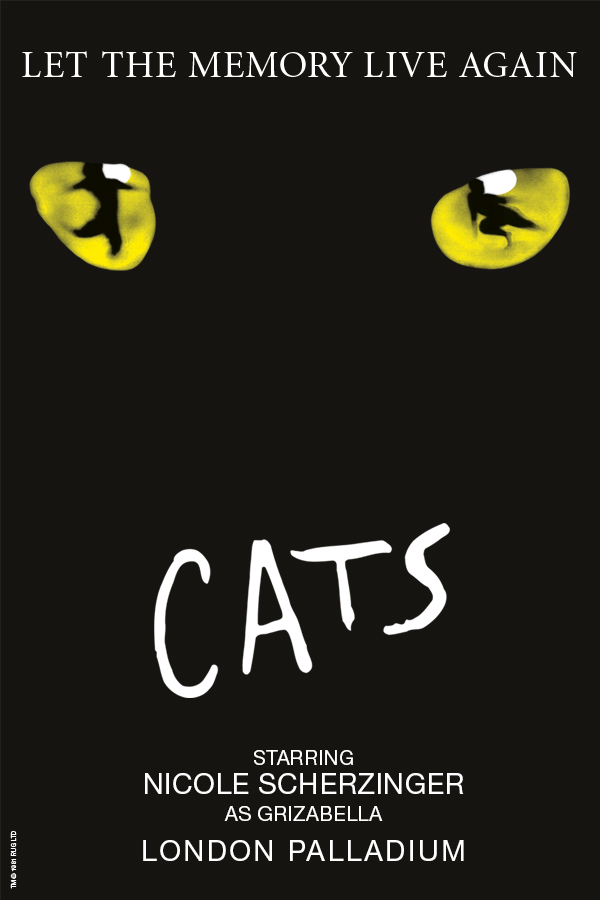
Musical
Revival
28) Cats (Revival)
Joué durant 4 mois 2 semaines
Première preview: 06 December 2014
Première: 11 December 2014
Dernière: 25 April 2015
Compositeur: Andrew Lloyd Webber •
Parolier: T.S. Eliot • Trevor Nunn •
Libettiste: Andrew Lloyd Webber • Gillian Lynne • Trevor Nunn •
Metteur en scène: Trevor Nunn •
Chorégraphe: Gillian Lynne •
Avec: Nicole Scherzinger (Grizabella, to 7 Feb 2015), Kerry Ellis (Grizabella from 9 Feb 2015), Cameron Ball (Macavity/Admetus), Kathryn Barnes (Tantomile), Cassie Clare (Cassandra), Ross Finnie (Skimbleshanks), Charlene Ford (Bombalurina), Adam Lake (Alonzo), Paul F Monaghan (Bustopher Jones/Asparagus/Growl Tiger), Joel Morris (Carbucketty), Natasha Mould (Jemima), Benjamin Mundy (Coricopat), Joseph Poulton (Quaxo/Mistoffelees), Nicholas Pound (Old Deuteronomy), Sophie Ragavelas (alternate Grizabella), Clare Rickard (Jellylorum/ Griddlebone), Adam Salter (Bill Bailey), Laurie Scarth (Jennyanydots), Hannah Kenna Thomas (Victoria/White Cat), Callum Train (Munkustrap), Zizi Strallen (Demeter) and Dawn Williams (Rumpleteazer) who are joined by swings Ryan Gover, Barry Haywood, Alice Jane, Grace McKee, Dane Quixall and Libby Watts
Commentaire:
Presse: "Has the show dated since 1981? Aside from some tinny electronic sounds, not really. Is that because it's timeless? I don’t think so. Cats is actually a classy species of panto - fluffy, shiny, just about perfect for this time of year." Dominic Cavendish for The Telegraph
"The anthropomorphised felines, in their spandex leotards and furry leg warmers, still prowl the aisles and glare in the eyes of the punters but the show, with its trademark junkyard set by John Napier, feels less like a prototype immersive experience and more like a weird through-sung-and-danced revue ..." Paul Taylor for The Independent
"It is all performed with great commitment, the dancing is excellent and Nunn’s direction gives a diffuse show a carnivalesque unity. But, while Cats is enjoyable in itself, I’m not convinced it led musicals in the right direction." Michael Billington for The Guardian
"While Cats can’t mask the degree to which it’s rooted in the Eighties, it is a genuinely opulent ensemble piece with a surprising undercurrent of surrealism." Henry Hitchings for The Evening Standard
"In X Factor jargon, Miss Scherzinger nailed it, her low voice almost gasping with emotion, harmonising briefly with another singer before seizing back her solo and clinching it with lusty, self-discovering power. Meow meow meow!!" Quentin Letts for The Daily Mail
Plus d'infos sur cette production:
Plus d'infos sur ce musical
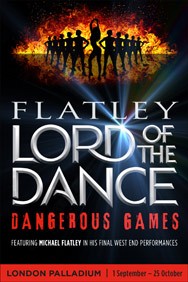
Spectacle
Revival
27) Lord of the Dances-Dangerous Games (Revival)
Joué durant 1 mois 2 semaines
Première preview: 01 September 2014
Première: 03 September 2014
Dernière: 23 October 2014
Compositeur: *** Divers •
Parolier: *** Divers •
Libettiste: *** Divers •
Metteur en scène: Michael Flatley •
Chorégraphe: Michael Flatley •
Avec: James Keegan as Lord of the Dance
Commentaire: Features new staging, new costumes and new choreography. Based on Irish folklore, this is the classic tale of Good vs. Evil, expressed through the universal language of dance. It's the story of the Little Spirit, who travels through time to help the Lord of the Dance protect his people from the challenge of Don Dorcha, the Dark Lord. As this dark power challenges our hero, the adventure draws you into a mythical universe of love, danger, and desire, created by an orchestrated combination of precision dancing, state of the art lighting and pyrotechnics.
Sera repris au Dominion Theatre l'année suivante (plus)
Presse: "Lord of the Dance: Dangerous Games is very much like other Flatley shows, except that he has, Woody Allen-style, passed on the central role to be shared among three young Lordlings. On the opening night, James Keegan took the lead: hugely impressively." Laura Thompson for Daily Telegraph
Plus d'infos sur cette production:

Musical
Original
26) I Can't Sing! The X Factor Musical (Original)
Joué durant 1 mois 2 semaines
Première preview: 27 February 2014
Première: 26 March 2014
Dernière: 10 May 2014
Compositeur: Steven Brown •
Parolier: Steven Brown •
Libettiste: Harry Hill •
Metteur en scène: Sean Foley •
Chorégraphe: Kathy Prince •
Avec: Nigel Harman (Simon Cowell), Cynthia Erivo (Chenice), Alan Morrissey (Max), Ashley Knight (Louis), Victoria Elliott (Jordy), Simon Bailey (Liam O'Deary), Billy Carter (Gerard Smalls), Simon Lipkin (Barlow), Joe Speare (Grandad), Katy Secombe (Brenda), Charlie Baker (The Hunchback), and Shaun Smith & Rowen Hawkins (Alterboyz)
Commentaire: Enorme flop…. Les réservations étaient ouvertes jusqu'au 25 aoctobre 2014, mais le musical a fermé anticipativement le 10 mai 2014, 1 mois et demi après l'ouverture! (plus)
Presse: "Cowell’s decision to back a musical that sends him up so mercilessly – there is an astonishing final reveal about his true nature – either suggests he is less awful than he appears, or that he will go along with anything just so long as it makes him more money." Charles Spencer for The Telegraph
"I'm not saying “I Can't Kvetch!” because there are all kinds of niggles and caveats – not least that the whole venture feels more than a tad belated. But there is a bonkers, surreal charm to the loopy lampooning..." Paul Taylor for The Independent
"Although it has flashes of wit, Harry Hill and Steve Brown's show doesn't know whether it wants to excoriate The X Factor or boost its TV ratings." Michael Billington for The Guardian
"Harry Hill's brilliant X Factor lampoon backed by Simon Cowell himself cleverly engages with popular culture without taking the audience for fools." Simon Edge for The Daily Express
Plus d'infos sur cette production:
Plus d'infos sur ce musical
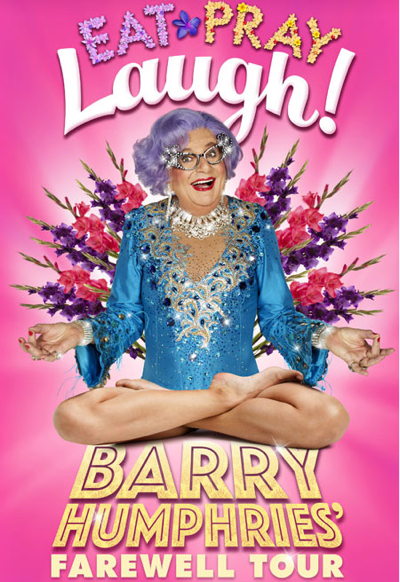
Spectacle
Revival
25) Barry Humphries' Farewell Tour: Eat Pray Laugh (Revival)
Joué durant 1 mois 3 semaines
Première preview: 13 November 2013
Première: 15 November 2013
Dernière: 05 January 2014
Compositeur: *** Divers •
Parolier: *** Divers •
Libettiste: *** Divers •
Metteur en scène: Simon Phillips •
Chorégraphe:
Avec: Barry Humphries
Commentaire:
Presse:
Plus d'infos sur cette production:
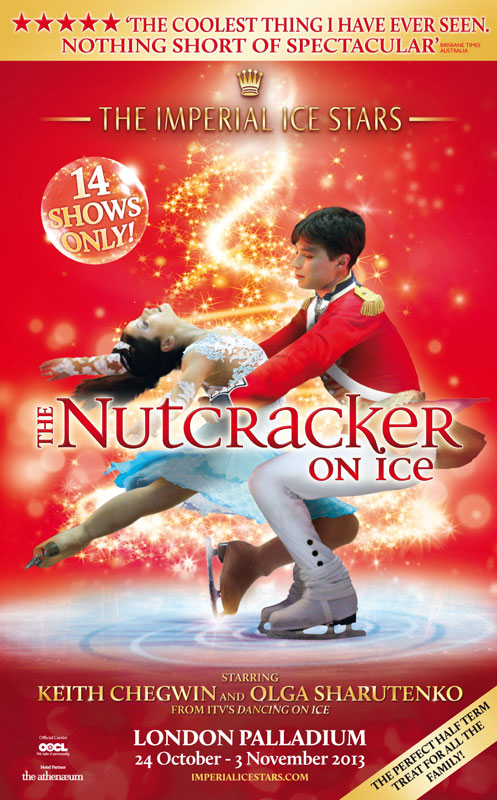
Spectacle
Revival
24) Nutcracker on Ice (Revival)
Joué durant 1 semaine
Première preview: 24 October 2013
Première: 25 October 2013
Dernière: 03 November 2013
Compositeur: *** Divers •
Parolier: *** Divers •
Libettiste: *** Divers •
Metteur en scène:
Chorégraphe:
Avec: The Imperial Ice Stars, plus Keith Chegwin, Olga Sharutenko
Commentaire: The Nutcracker on Ice marks the first time almost 36 years that the London Palladium stage will be transformed into an ice rink (plus)
Presse:
Plus d'infos sur cette production:
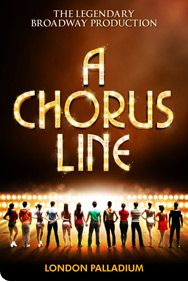
Musical
Revival
23) A Chorus Line (Revival)
Joué durant 6 mois 1 semaine
Première preview: 05 February 2013
Première: 19 February 2013
Dernière: 31 August 2013
Compositeur: Marvin Hamlisch •
Parolier: Edward Kleban •
Libettiste: James Kirkwood • Nicholas Dante •
Metteur en scène: Bob Avian •
Chorégraphe: Michael Bennet • Bob Avian •
Avec: John Partridge (Zach), Scarlett Strallen (Cassie), Leigh Zimmerman (Sheila), Victoria Hamilton-Barritt (Diana), Lucy Adcock (Judy), Georgie Ashford (Trisha), Ed Currie (Bobby), Frances Dee (Kristine), Segun Fawole (Butch), Harry Francis (Mark), Simon Hardwick (Al), Rebecca Herszenhon (Val), James T Lane (Richie), Marc Leslie (Roy), Vicki Lee Taylor (Maggie), Daisy Maywood (Bebe), Alice Jane Murray (Lois), Alastair Postlethwaite (Larry), Andy Rees (Greg), Adam Salter (Mike), Alexzandra Sarmiento (Connie), Michael Steedon (Tom), Gary Watson (Don), Gary Wood (Paul), Rebecca Giocopazzi, Genevieve Nicole, Ashley Nottingham
Commentaire:
Presse: "The startling simplicity of the show still impresses...The show suggests that theatre is both a metaphor for life and a way of escaping it, and there is something genuinely moving about the way it gives an individual voice to performers who are normally just part of an anonymous ensemble. "
Charles Spencer for The Daily Telegraph
"There is tremendous artistry in A Chorus Line and an admirable seriousness."
Quentin Letts for The Daily Mail
"Lovingly recreated...The splendid (largely British) cast have made a sizzling connection with the show's timeless spirit of dedication to one's art through thick and thin and project it with exhilarating flair and force. "
Paul Taylor for The Independent
"It’s a tight and entertaining celebration of physicality — and of life. "
Henry Hitchings for Evening Standard
"An excellent show. "
Michael Billington for The Guardian
Plus d'infos sur cette production:
Plus d'infos sur ce musical

Musical
Revival
22) Scrooge The Musical (Revival)
Joué durant 2 mois 1 semaine
Première preview: 24 October 2012
Première: 06 November 2012
Dernière: 12 January 2013
Compositeur:
Parolier:
Libettiste:
Metteur en scène: Bob Tomson •
Chorégraphe: Lisa Kent •
Avec:
Commentaire:
Presse:
Plus d'infos sur cette production:
Plus d'infos sur ce musical
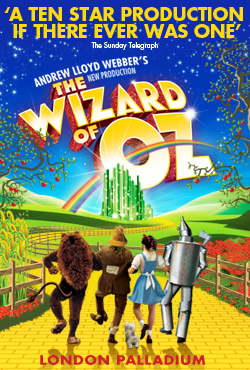
Musical
Original
21) Wizard of OZ (The) (Vers Lloyd Webber) (Original)
Joué durant 1 an 6 mois
Première preview: 07 February 2011
Première: 01 March 2011
Dernière: 02 September 2012
Compositeur: Andrew Lloyd Webber • E.Y. Harburg • Harold Arlen •
Parolier: E.Y. Harburg • Harold Arlen • Tim Rice •
Libettiste: Jeremy Sams • L. Frank Baum •
Metteur en scène: Jeremy Sams •
Chorégraphe: Arlene Phillips •
Avec: Dorothy Gale ... Danielle Hope / Wicked Witch & Ms. Gultch ... Hannah Waddingham / The Wizard & Professor Marvel ... Michael Crawford / Glinda ... Emily Tierney / Scarecrow/Hunk ... Paul Keating / Tin Man/Hickory ... Edward Baker-Duly / Cowardly Lion/Zeke ... David Ganly / Auntie Em ... Helen Walsh / Uncle Henry ... Stephen Scott / Munchkin Mayor ... Zeph
Commentaire: With previews from 7th February, the original Dorothy was Danielle Hope, with Sophie Evans playing certain performances. The role of Dorothy was cast through the 2010 reality television show “Over the Rainbow”, in which Danielle Hope won and Sophie Evans was the runner-up. (plus)
Presse: "It's somewhat lacking in humanity. I came out feeling blitzkrieged rather than charmed...the paradox of the evening is that it suffers the same dilemma as the Tin Man: it might have been so much more if it only had a heart."
Michael Billington for The Guardian
"Exhilarating new production...Jeremy Sams's production is a marvel of beguiling narrative fluency and, with Richard Jones's superb designs, of endlessly witty and spectacular visual invention."
Paul Taylor for The Independent
"The story is lucid and well-paced, though the technological wizardry occasionally obscures its inherent magic...This is a family musical with a gorgeous sense of spectacle, as well as being a polished essay in escapism."
Henry Hitchings for The Evening Standard
"The dramatic buzz here is not much better than you’d find at a decent pantomime."
Quentin Letts for The Daily Mail
"While there is a good deal to recommend about this much-anticipated production...I could not help but imagine director Jeremy Sams himself knocking on the doors of Emerald City to ask the great Oz what ingredients would turn his okay show into a great one. How about a big injection of energy and a dose of feeling..."
Lisa Martland for The Stage
"One leaves the theatre humming the tunes and admiring the spectacle. But this finally strikes me as a soullessly efficient production rather than an inspired re-invention of The Wizard of Oz."
Charles Spencer for The Daily Telegraph
Plus d'infos sur cette production:
Plus d'infos sur ce musical
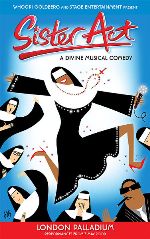
Musical
Original London
20) Sister Act (Original London)
Joué durant 1 an 5 mois
Nb de représentations: 591 représentations
Première preview: 07 May 2009
Première: 02 June 2009
Dernière: 30 October 2010
Compositeur: Alan Menken •
Parolier: Glenn Slater •
Libettiste: Bill Steinkellner • Cherie Steinkellner •
Metteur en scène: Jerry Zaks •
Chorégraphe: Anthony Van Laast •
Avec: Patina Miller (Deloris), Chris Jarman (Shank), Nicolas Colicos (Bones), Ivan de Freitas (Dinero), Ako Mitchell (Eddie), Katie Rowley-Jones (Sister Mary Robert), Julia Sutton (Sister Mary Lazarus), Claire Greenaway (Sister Mary Patrick), Sheila Hancock (Mother Superior), Ian Lavender (Monsignor Howard), Thomas Goodridge, Amy Booth Steel, Debbie Kurup.
Commentaire: Was originally slated to close on January 1, 2011, but was forced to shutter early for Webber's new version of The Wizard of Oz.
Whoopi was forced to end her run early, but returned for one performance on October 22, and two each on October 23 and 25. (plus)
Presse: FIONA MOUNTFORD for THE EVENING STANDARD says, "It’s a wimple-wibbling, habit-forming triumph." MICHAEL BILLINGTON for THE GUARDIAN says, "A show that feels less like a personally driven work of art than a commercial exploitation of an existing franchise...What was originally a fairytale fantasy, however, makes little sense in its new, vulgarised incarnation." BENEDICT NIGHTINGALE for THE TIMES says, "A rather sweet, sentimental film has been hyped up, coarsened... There’s less deft comedy, but much more music, most of it indebted to the 1970s, where the action is now set." CHARLES SPENCER for THE DAILY TELEGRAPH says, "Sister Act proves more enjoyable on stage than it did on film...the cheers and standing ovation at the end were both genuine and deserved...With slick and witty choreography...and pacy direction...I suspect this musical comedy about a nun on the run could prove habit-forming...." LISA MARTLAND for THE STAGE says, "Highly recommended." QUENTIN LETTS for THE DAILY MAIL says, "I hated its artistic laziness, its predictability, its incuriosity, its idea that disco is divine..."
Plus d'infos sur cette production:
Plus d'infos sur ce musical
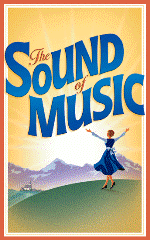
Musical
Revival
19) Sound of Music (The) (Revival)
Joué durant 2 ans 3 mois 1 semaine
Nb de représentations: 951 représentations
Première preview: 03 November 2006
Première: 15 November 2006
Dernière: 21 February 2009
Compositeur: Richard Rodgers •
Parolier: Oscar Hammerstein II •
Libettiste: Howard Lindsay • Russel Crouse •
Metteur en scène: Jeremy Sams •
Chorégraphe: Arlene Phillips •
Avec: Cast: Connie Fisher (Maria), Alexander Hanson (Captain von Trapp), Lesley Garrett (Mother Abbess), Lauren Ward (Elsa), Ian Gelder (Max Detweiler), Sophie Bould (Liesl), Neil McDermott (Rolf), John Griffiths, Claire Massie, Susie Fenwick, Margaret Preece.
Commentaire: This was a spectacular and very successful revival. The original intention was for Hollywood actress Scarlett Johansson to play Maria, but when contract negotiations fell through, it was decided to cast the role of Maria through a talent search reality-TV show called “How Do You Solve a Problem Like Maria?” - presented by Andrew Lloyd Webber and Graham Norton, with David Ian, John Barrowman and Zoe Tyler as judges. The final choice, Connie Fisher, was selected by public vote. This method of casting was much criticised within the performing industry, but Connie Fisher (after a nervous opening night) turned out to be an excellent choice (and the enormous publicity led to record advance sales.)
Early in 2007 Connie Fisher missed two weeks due to illness and her understudy, Aoife Mulholland, took over, and later played the matinees to relieve the pressure on Connie Fisher. The original von Trapp was Simon Shepherd, but after two preview performances he was withdrawn from the production, and Alexander Hanson took over the role. During its two year run later Marias included Aoife Mulholland, Summer Strallen and Gemma Baird, with Simon Burke and Simon MacCorkindale as later von Trapps. The show closed on February 21 2009, after a run of over two years. (plus)
Presse:
Plus d'infos sur cette production:
Plus d'infos sur ce musical

Musical
Revival
18) Scrooge The Musical (Revival)
Joué durant 2 mois 1 semaine
Première preview: 20 October 2005
Première: 08 November 2005
Dernière: 14 January 2006
Compositeur:
Parolier:
Libettiste:
Metteur en scène: Bob Tomson •
Chorégraphe: Lisa Kent •
Avec: Tommy Steele (Scrooge), Tom Solomon {Young Scrooge), Glyn Kerslake (Bob Cratchit), Barry Howard (Jacob Marley), Gemma Page {Christmas Past), James Head {Christmas Present), Ian Sanders {Christmas Yet to Come)
Commentaire: According to a plaque in the Dress Circle Bar, Tommy Steele has headlined more performances at the London Palladium than any other artist (his last show being “Singing in the Rain” in 1989). Although this cheery cockney persona doesn’t immediately suggest Scrooge, he was welcomed back like a conquering hero. It was very enjoyable Christmas fayre. (plus)
Presse: NICHOLAS DE JONGH for THE EVENING STANDARD says, "Melancholia, music-hall atmosphere and pantomimic air... infests this...musical...plodding production."
MICHAEL COVENEY for THE INDEPENDENT says, "Enjoyably creaky old musical."
MICHAEL BILLINGTON for THE GUARDIAN says, "The best feature of a dull evening is Paul Kieve's illusions."
BENEDICT NIGHTINGALE for THE TIMES says, "There are good moments...The singing is often so strong that it seems sad that the tunes and lyrics are so ordinary."
CHARLES SPENCER for THE DAILY TELEGRAPH says, "This Scrooge proves quite nauseatingly sentimental."
Plus d'infos sur cette production:
Plus d'infos sur ce musical
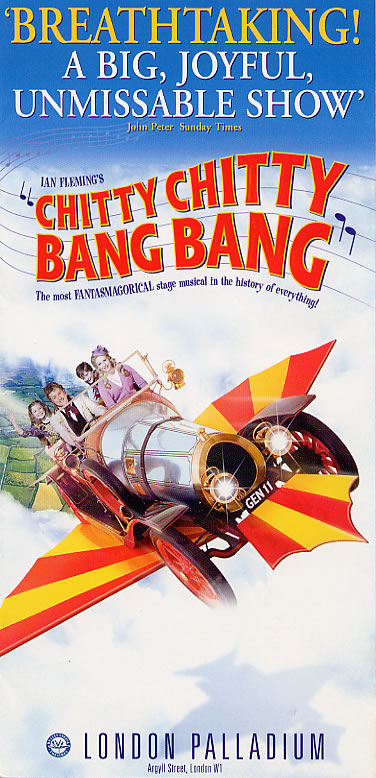
Musical
Original
17) Chitty Chitty Bang Bang (Original)
Joué durant 3 ans 4 mois 3 semaines
Nb de représentations: 1415 représentations
Première preview: 19 March 2002
Première: 16 April 2002
Dernière: 04 September 2005
Compositeur: Richard M Sherman • Robert B Sherman •
Parolier: Richard M Sherman • Robert B Sherman •
Libettiste: Jeremy Sams •
Metteur en scène: Adrian Noble •
Chorégraphe: Gillian Lynne •
Avec: Michael Ball (Caractacus Potts), Anton Rodgers (Grandpa Potts), George Gillis/Harry Smith/Luke Newberry (Jeremy), Carrie Fletcher/Lauren Morgan,Kimberley Fletcher (Jemima), Emma Williams (Truly Scrumptious), Brian Blessed (Baron Bomburst), Nichola McAuliffe (Baroness Bomburst), Richard O’Brian (Childcatcher), Edward Petherbridge (Toymaker), Graham Hoadley, David Ross, Emil Wolk,
During the long run, cast changes in various roles included Brian Conley, Gary Wilmot, Victor Spinetti, Christopher Biggins, Paul O’Grady, Peter Polycarpou, Alvin Stardust, Jason Donovan, Tony Adams and Freddie Lees, with Caroline Sheen, Sandra Dickinson, Louise Gold, and Jo Gibb.
Commentaire: Based on the 1968 film of an Ian Fleming story, the musical version included six new songs by the Sherman Brothers, who wrote the original film songs. The musical version, adapted by Jeremy Sams, opened at the London Palladium in April 2002 and ran until September 2005 - a three and a half year run which made it the longest running show to date at the Palladium. Box office sales during this period amounted to over £70 million. (It would later open on Broadway in April 2005, receive terrible notices and run for just eight months - 285 performances - losing its entire financial investment) (plus)
Presse: TIM MASTERS for BBC ONLINE says, "You come out of the London Palladium feeling like a kid on Christmas Eve."
NICHOLAS DE JONGH for THE EVENING STANDARD says, "Sheer theatrical magic" And goes on to say, "Chitty Chitty Bang Bang proves itself an ageless pleasure and a pleasure for all ages. "
MICHAEL BILLINGTON for THE GUARDIAN says, "It is the car everyone has come to see, and I can only report that when it becomes airborne and flies over the front stalls there are gasps of astonished delight."
WARWICK THOMPSON for LONDON METRO says, "Be amazed. Be very amazed."
CHARLES SPENCER for THE DAILY TELEGRAPH says, "The audience was purring with pleasure from the moment the band struck up the title tune during the overture."
GEORGINA BROWN for THE MAIL ON SUNDAY says, "Oh dear. I hate to be a wet blanket, but Chitty Chitty Bang Bang is a huge disappointment."
MICHAEL COVENEY for THE DAILY MAIL says, " Brilliantly and ingeniously designed by Anthony Ward."
Plus d'infos sur cette production:
Plus d'infos sur ce musical
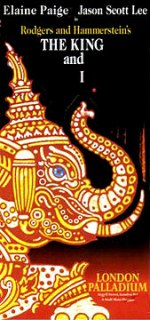
Musical
Revival
16) King and I (The) (Revival)
Joué durant 1 an 8 mois 1 semaine
Première preview: 18 April 2000
Première: 03 May 2000
Dernière: 05 January 2002
Compositeur: Richard Rodgers •
Parolier: Oscar Hammerstein II •
Libettiste: Oscar Hammerstein II •
Metteur en scène: Christopher Renshaw •
Chorégraphe: Jerome Robbins •
Avec: Elaine Paige (Anna), Jason Scott Lee (King), Taewon Yi Kim (Lady Thiang), Aura Deva (Tuptim), Sean Ghazi (Lun Tha), Robin Kermode (Sir Edward), Richard Avery, Miguel Diaz, Ho Yi
Commentaire: This production originated in Australia in 1995, then moved to Broadway with Donna Murphy and Lou Diamond Phillips and Taewon Yi Kim. After 780 performances in New York it transferred to London, and opened “to the largest box office advance in theatrical hyperbole”. It was described as lavish and sumptuous, though the sheer weight of the spectacle, parades and displays tended to slow down the show, giving it a running time in excess of three hours. After 3 months Jason Scott Lee left because of family problems and was replaced by his understudy, Paul Nagauchi. In April 2001 the principal roles were taken by Josie Lawrence and Yeo. The show ran for a year and 8 months, finishing at the beginning of January, 2002. (plus)
Presse: NICHOLAS DE JONGH for THE EVENING STANDARD says it left his ears "unimpressed" and his heart "unengaged". He also thought the production looked "rather stale".
JOHN PETER for THE SUNDAY TIMES says, "As a singer, Paige is a fine technician who knows how to use her voice, but it is a voice I do not like: it sounds hard, almost metallic, and like her acting, it is not suited to expressing feelings."
THE EXPRESS says, "The trouble is that Christopher Renshaw's frankly provincial production has no pace or vitality and is too faithfully reconstituted in a red cavern of stooping elephant trunks, Brian Thomson's design resembles a large-scale Indian restaurant with a naff floorshow."
JANE EDWARDES for TIME OUT says, "She [Paige] is best when she keeps it tough and resourceful, and Scott Lee makes a witty, sardonic tyrant."
THE FINANCIAL TIMES says, "A handsome, spectacular, strongly performed introduction to one of the truly great musicals."
SHERIDAN MORLEY for TELETEXT had great things to say about Paige's performance, "Elaine Paige, confirming her title as the first lady of the British musical stage, admittedly against precious little opposition, takes charge of a show that was always meant to be about Anna. In doing so, she gives us what is unquestionably the performance of her career so far."
THE DAILY MIRROR says, "Elaine Paige as English governess Anna proves she is the queen of the British stage musical and also shows a delicate comic touch."
THE EXPRESS says, "Love it or loathe it, The King and I is an unstoppable smash."
PETER HEPPLE for THE STAGE says, "Although possibly too young for the role, Jason Scott Lee is a fine catch to play the King. He has a natural authority, a good singing voice and enjoys the role's comedy aspects.."
Plus d'infos sur cette production:
Plus d'infos sur ce musical
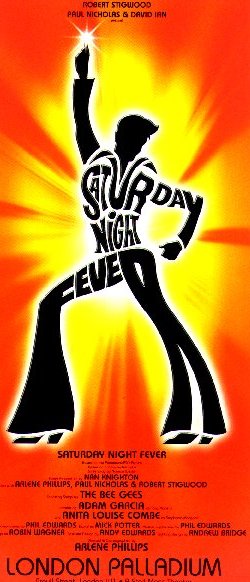
Musical
Original
15) Saturday Night Fever (Original)
Joué durant 1 an 9 mois 3 semaines
Première preview: 21 April 1998
Première: 05 May 1998
Dernière: 26 February 2000
Compositeur: Bee Gees •
Parolier: Bee Gees •
Libettiste: Arlene Phillips • Nan Knighton • Paul Nicholas • Robert Stigwood •
Metteur en scène: Arlene Phillips •
Chorégraphe: Arlene Phillips •
Avec: Adam Garcia (Tony Monero), Anita Louise Combe (Stephanie), Tara Wilkinson (Annette), Simon Greiff (Bobby C), Richard Calkin (Monty), David Paynton-Bruhl (Fusco), Jonathan Avery (Frank Monero), Susan Fay (Flo Manero), John Stacey (Frank Junior), Lara Costa (Maria), Daryn Crosbie (Cesar)
Commentaire: Originally a story by Nik Cohn, it became a smash-hit 1977 Paramount film with a screenplay by Norman Wexler, starring John Travolta. The £4 million stage adaptation was attributed to Nan Knighton “in collaboration with Arlene Phillips, Paul Nicholas and Robert Stigwood”. Many of the film's darker elements, including references to racial conflict, drug use and violence, were eliminated from the plot. It received very mixed reviews, though there was universal praise for Adam Garcia. It ran for 21 months at the Palladium and later undertook several UK tours, and international stagings. (plus)
Presse: JAMES WHITAKER of THE DAILY MIRROR says "Some of the best dancing ever seen on a West End stage "
ROBERT GORE-LANGTON of THE DAILY EXPRESS said, " If you liked Grease you'll probably love this ".
MICHAEL COVENEY of THE DAILY MAIL was not too impressed saying, " I don't think there's a single good song here."
DAVID LISTER of THE INDEPENDENT says "The show lacked tension, a sense of danger, a sense of New York, a sense of the repressed working-class life…"
NICHOLAS JE JONGH of THE EVENING STANDARD says "It's a tame, not that well sung disco blast from the recent past.."
However, the most scathing review I read, and disagreed with, was by SHERIDEN MORLEY who says the show has a score "so unmemorable, you forget its songs while they are being sung" and goes on to say "Stay at home with a video, but not the one of this pathetic apology for entertainment".
Plus d'infos sur cette production:
Plus d'infos sur ce musical
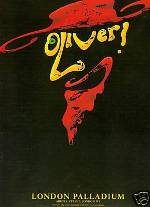
Musical
Revival
14) Oliver! (Revival)
Joué durant 3 ans 2 mois 2 semaines
Première preview: 15 November 1994
Première: 08 December 1994
Dernière: 21 February 1998
Compositeur: Lionel Bart •
Parolier: Lionel Bart •
Libettiste: Lionel Bart •
Metteur en scène: Sam Mendes •
Chorégraphe: Matthew Bourne •
Avec: Jonathan Pryce (Fagin), Sally Dexter (Nancy), Miles Anderson (Bill Sykes), Gregory Bradley/James Daley (Oliver), Paul Bailey/Adam Searles (Artful Dodger), James Saxon (Mr Bumble), Jenny Galloway (Widow Corney), David Delve (Mr Sowerberry)
Commentaire: Un énorme succès, ce revival de Oliver! au Palladium de Londres pendant 4 ans!!!!! Il faut dire que Sam Mendes signe la mise en scène et Matthew Bourne la chorégraphie.
This £3.5 million lavish production was praised as the ultimate version, and went on to become the longest-running show in the history of the London Palladium. Subsequent Fagins included George Layton, Jim Dale, Russ Abbott, Robert Lindsay and Barry Humphries. Subsequent Nancys included Claire Moore, Ruthie Henshall and Sonia Swaby.
A huge success. (plus)
Presse:
Plus d'infos sur cette production:
Plus d'infos sur ce musical

Musical
Revival
13) Fiddler on the Roof (Revival)
Joué durant 2 mois 1 semaine
Première preview: 28 June 1994
Première: 28 June 1994
Dernière: 03 September 1994
Compositeur: Jerry Bock •
Parolier: Sheldon Harnick •
Libettiste: Joseph Stein •
Metteur en scène: Jerome Robbins •
Chorégraphe: Jerome Robbins •
Avec: Topol (Tevye), Sara Kestelman (Golde), Margaret Robertoson (Yente), David Bacon (Lazar Wolf), Peter Darling (Perchick), Jacquelyn Yorke (Tzeitel), Neil Rutherford (Motel), Adi Topol-Margalith (Chava), George Little (Innkeeper), Millie Kieve, Alastair Bull
Commentaire: It had been 27 years since Topol first played Tevye in London, and it was reckoned he had now played the role some 1,500 times. Back in 1967 at the age of 31 he had to leave the role to return to Israel to fight in the Six Day War - and his understudy, George Little, took over for the duration. George Little was also in this current revival, playing the part of the Innkeeper. This time, too, Topol’s daughter, Adi, was in the show, playing his stage daughter. (plus)
Presse:
Plus d'infos sur cette production:
Plus d'infos sur ce musical
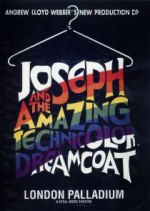
Musical
Revival
12) Joseph and the Amazing Technicolor Dreamcoat (Revival)
Joué durant 2 ans 7 mois 1 semaine
Nb de représentations: 1077 représentations
Première preview: 12 June 1991
Première: 12 June 1991
Dernière: 15 January 1994
Compositeur: Andrew Lloyd Webber •
Parolier: Tim Rice •
Libettiste:
Metteur en scène: Steven Pimlott •
Chorégraphe: Anthony Van Laast •
Avec: Jason Donovan (Joseph), Linzi Hateley (Narrator), Jason Moore (Benjamin), David Easter (Pharaoh), Nicolos Colicos, Aubrey Woods, Paul Tomkinson, Patrick Clancy, Nadia Strahan
Commentaire: This was a much enlarged and re-thought production given “the full works” and had a very long run of some two and a half years. During the run Jason Donovan was replaced by Philip Schofield. (plus)
Presse:
Plus d'infos sur cette production:
Plus d'infos sur ce musical
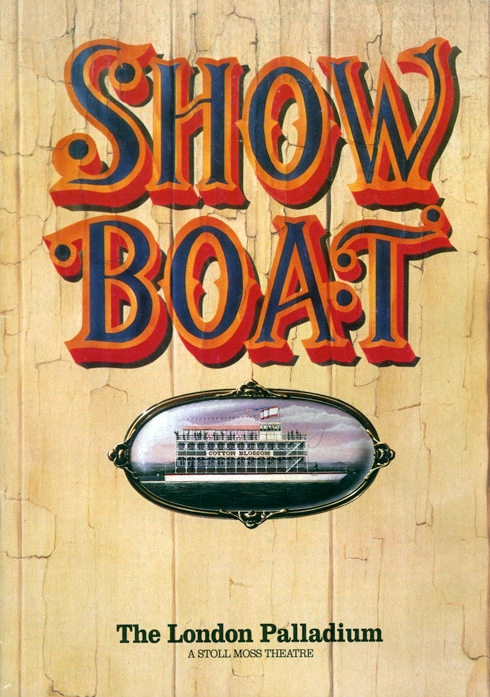
Musical
Return Engagement
11) Show Boat (Return Engagement)
Joué durant 2 mois
Nb de représentations: 77 représentations
Première preview: Inconnu
Première: 13 March 1991
Dernière: 18 May 1991
Compositeur: Jerome Kern •
Parolier: Oscar Hammerstein II •
Libettiste: Oscar Hammerstein II •
Metteur en scène: Ian Judge •
Chorégraphe: Lindsay Dolan •
Avec: Sally Burgess/Marilyn Cutts (Julie), Peter Savidge/Richard Halton (Ravenal), Janis Kelly/ Jan Hartley Morris (Magnolia), Bruce Hubbard (Joe), Geoffrey Hutchings, Margaret Courtenay, Philip Gould, Karla Bums, Anna Daventry
Commentaire: This was a return visit of the same production which had played the Palladium for 9 weeks in 1990. In the interim - and following - it would be on a UK tour. (plus)
Presse:
Plus d'infos sur cette production:
Plus d'infos sur ce musical
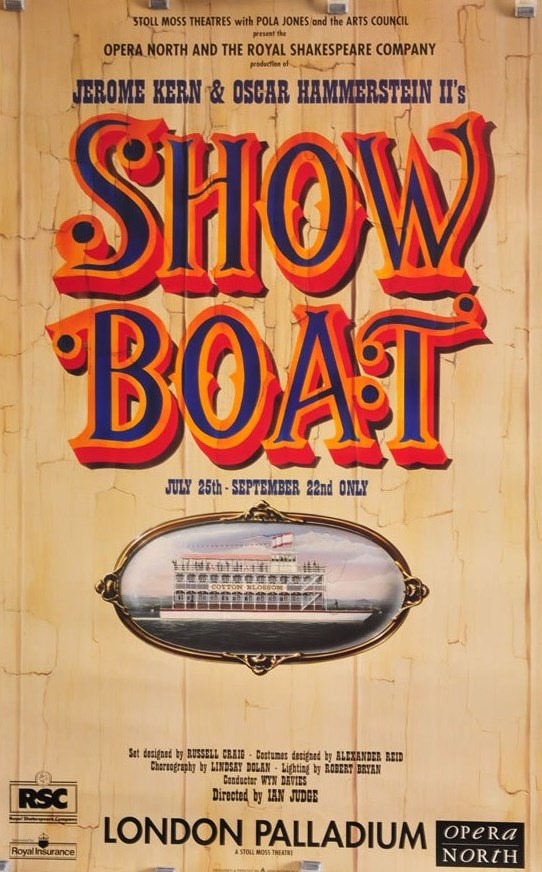
Musical
Revival
10) Show Boat (Revival)
Joué durant 1 mois 3 semaines
Nb de représentations: 76 représentations
Première preview: 25 July 1990
Première: 01 August 1990
Dernière: 22 September 1990
Compositeur: Jerome Kern •
Parolier: Oscar Hammerstein II •
Libettiste: Oscar Hammerstein II •
Metteur en scène: Ian Judge •
Chorégraphe: Lindsay Dolan •
Avec: Like most productions using opera singers, the roles were alternated: Sally Burgess/Marilyn Cutts (Julie), Peter Savidge/Richard Halton (Ravenal), Janis Kelly/ Jan Hartley Morris (Magnolia), Bruce Hubbard (Joe), Geoffrey Hutchings, Margaret Courtenay, Philip Gould, Karla Burns, Anna Daventry
Commentaire: This was a joint production between the RSC and Opera North and played a nine week season at the Palladium prior to a national tour. (plus)
Presse:
Plus d'infos sur cette production:
Plus d'infos sur ce musical
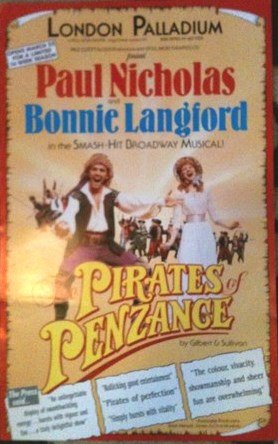
Musical
Revival
9) Pirates of Penzance (The) (Revival)
Joué durant 3 mois 1 semaine
Nb de représentations: 107 représentations
Première preview: Inconnu
Première: 23 March 1990
Dernière: 30 June 1990
Compositeur: Arthur Sullivan •
Parolier: W.S. Gilbert •
Libettiste: W.S. Gilbert •
Metteur en scène: Peter Walker •
Chorégraphe: Christopher Robinson •
Avec: Paul Nicholas (Pirate King), Bonnie Langford (Mabel), Frank Thornton (Major General), David Ian (Frederic), Patricia Lancaster (Ruth), Simon Browne
Commentaire: This was based on the production which had played Drury Lane in 1882, and had been re-created for a UK tour. It was booked into the Palladium for a limited 14 week season. (plus)
Presse:
Plus d'infos sur cette production:
Plus d'infos sur ce musical
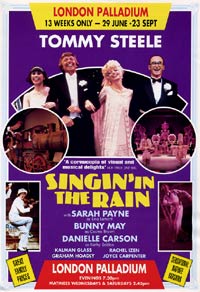
Musical
Revival
8) Singin' in the Rain (Revival)
Joué durant 4 mois 3 semaines
Nb de représentations: 164 représentations
Première preview: Inconnu
Première: 29 June 1989
Dernière: 18 November 1989
Compositeur: Nacio Herb Brown •
Parolier: Arthur Freed •
Libettiste: Adolph Green • Betty Comden •
Metteur en scène: Tommy Steele •
Chorégraphe:
Avec: Tommy Steele (Don Lockwood), Bunny May {Cosmo Brown), Danielle Carson (Kathy Selden), Sarah Payne (Lina Lamont), Graham Hoad ley (Roscoe Dexter)
Commentaire: This production had been on tour and had finished a long season at Manchester. It was due to play a 3 month season at the Palladium starring Tim Flavin, but Tim Flavin had an accident during rehearsals resulting in a fracture to his foot. Tommy Steele agreed to step in at the last moment. The original 13 weeks was extended due to the popularity of the show, but had to finish on November 18th because of other Palladium commitments. (plus)
Presse:
Plus d'infos sur cette production:
Plus d'infos sur ce musical
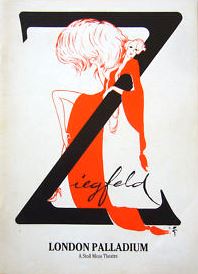
Musical
Original
7) Ziegfeld (Original)
Joué durant 5 mois 1 semaine
Première preview: Inconnu
Première: 26 April 1988
Dernière: 01 October 1988
Compositeur: *** Divers •
Parolier: *** Divers •
Libettiste: Alistair Beaton • Ned Sherrin •
Metteur en scène: Joe Layton •
Chorégraphe: Joe Layton •
Avec: Len Cariou (.Florenz Ziegfeld), Louise Gold (Goldie), Jaynee & Michelle Jordan (The Dolly Sisters), Fabienne Guyon {Anna Held), Aliki Georgiou (Lillian Lorraine), Haydn Gwynne (Billie Burke), Amanda Rickard (Marilyn Miller)
Commentaire: Although the major revamp occurred on 2 August 1988. There had been a mini-revamp on the 16 May 1988, when Len Cariou resigned, and was replaced (at that afternoon’s matinee) as Ziegfeld by his understudy Marc Urquhart (until Topol took over the role on 2 August 1988). Meanwhile on the same day, director Joe Layton was replaced by Tommy Steele. In addition there were endless changes throughout the show’s infamous seven month run.
According to The Guinness Book Of Records, Ziegfeld’s losses of around £3 million are equal to those of King (a musical about Martin Luther King that ran for 6 weeks in London ending on 2 June 1990), and are the joint second greatest theatrical losses. First place for this record goes to Carrie produced in New York in May 1988, which lost around £4.2 million. (plus)
Presse:
Plus d'infos sur cette production:
Plus d'infos sur ce musical
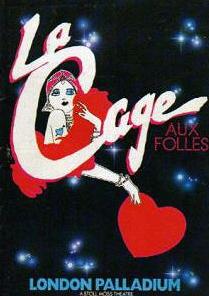
Musical
Revival
6) Cage aux Folles (La) (Revival)
Joué durant 8 mois 4 semaines
Nb de représentations: 301 représentations
Première preview: Inconnu
Première: 07 May 1986
Dernière: 31 January 1987
Compositeur: Jerry Herman •
Parolier: Jerry Herman •
Libettiste: Harvey Fierstein •
Metteur en scène: Arthur Laurents •
Chorégraphe: Scott Salmon •
Avec: Denis Quilley (Georges), George Hearn (Albin), Jonathan Morris (Jean-Michel), Wendy Roe (Anne), Brian Glover (Edouard Dindon), Julia Sutton (Mme Dindon), Phyllida Law (Jacqueline), Donald Waugh (Jacob)
Commentaire: Based on the 1973 play by Jean Poiret, this was a huge risk - Broadway’s first ever gay musical. The first-night audience seemed a little shocked by the opening chorus of transvestite Cagelles, but dutifully applauded. Then came the crunch: a “love scene” between two men, Georges and Albin – openly expressed with physical contact. There were nervous titters. It was dicey, but George Hearn and Gene Barry played as though they were alone with their love. And then Gene sang, so simply, so truly, a love ballad. The audience cheered and applauded.
They were applauding the song, of course, but this applause was an historical moment in musical theatre history. This was the very moment when a gay relationship was accepted on equal terms with every other boy-girl relationship in the world of musical comedy. More followed when, at the end of the first act, Albin, dressed as a drag queen, sang “I Am What I Am”. If he was scared, he didn’t show it. In the wings the whole company was in tears. Much of the audience was in tears. This was another historical moment: a plea for tolerance and liberation, and one that didn’t fall on deaf ears. Broadway’s first “gay musical” turned out to be a 1,176 performance mega-hit.
And yet the London production ran just nine months: the gay bits were not going to shock a London audience. London had seen it all before. (plus)
Presse:
Plus d'infos sur cette production:
Plus d'infos sur ce musical
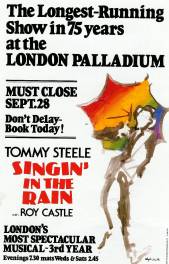
Musical
Revival
5) Singin' in the Rain (Revival)
Joué durant 2 ans 3 mois
Première preview: Inconnu
Première: 30 June 1983
Dernière: 28 September 1985
Compositeur: Nacio Herb Brown •
Parolier: Arthur Freed •
Libettiste: Adolph Green • Betty Comden •
Metteur en scène: Tommy Steele •
Chorégraphe: Peter Gennaro •
Avec: Tommy Steele (Don Lockwood), Roy Castle (Cosmo Brown), Danielle Carson (Kathy Seiden), Sarah Payne (Lina Lamont), Matt Zimmerman (Roscoe Dexter), Joyce Carpenter (Miss Ginsmore), Kalman Glass, Shealagh Dennis
Commentaire: Based on the MGM motio picture screenplay by Betty Comden and Adolph Green, this was the story of movie-making in the 1920s at the time when Hollywood switched from silents to talkies, re-created almost exactly as in the classic film and centred around the spectacular “Singin’ in the Rain” number. This was a great success at the Palladium and ran for over two years. Later cast changes included Bunny May as Cosmo Brown and Graham Hoadley as Roscoe. (plus)
Presse: "Tommy Steele’s is a lovely performance…here is a player haloed by a curious radiance whenever he steps onto a stage. The occasion is a triumph for him.” Sunday Telegraph
“Singin’ In The Rain has brought the big lavish musical back to the West End with a vengeance.” Daily Express
"…a cornucopia of visual and musical delights.” Daily Mail
Plus d'infos sur cette production:
Plus d'infos sur ce musical

Musical
Original
4) Barnum (Original)
Joué durant 1 an 7 mois 4 semaines
Nb de représentations: 655 représentations
Première preview: Inconnu
Première: 11 June 1981
Dernière: 05 February 1983
Compositeur: Cy Coleman •
Parolier: Michael Stewart •
Libettiste: Mark Bramble •
Metteur en scène: Joe Layton •
Chorégraphe: Joe Layton •
Avec: Michael Crawford (P.T.Barnum), Deborah Grant (Charity Barnum), William C. Witter (Ringmaster), Christopher Beck (Tom Thumb), Sarah Payne (Jenny Lind)
Commentaire: This was a great personal success for Jim Dale in the Broadway production, followed by Michael Crawford in London. A new production opened in Manchester in 1984 at the Manchester Opera House and ended its tour at the Victoria Palace in 1986. (plus)
Presse:
Plus d'infos sur cette production:
Plus d'infos sur ce musical
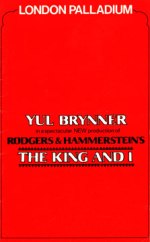
Musical
Revival
3) King and I (The) (Revival)
Joué durant
Nb de représentations: 538 représentations
Première preview: Inconnu
Première: 12 June 1979
Dernière: Inconnu
Compositeur: Richard Rodgers •
Parolier: Oscar Hammerstein II •
Libettiste: Oscar Hammerstein II •
Metteur en scène: Yuriko •
Chorégraphe: Jerome Robbins •
Avec: Virginia McKenna (Anna), Yul Brynner (King), Hye-Young Choi (Lady Thiang), June Angela (Tuptim), Marty Rhone (Lun Tha)
Commentaire:
Presse:
Plus d'infos sur cette production:
Plus d'infos sur ce musical

Musical
Original London
2) Golden Boy (Original London)
Joué durant
Nb de représentations: 118 représentations
Première preview: 04 June 1968
Première: 04 June 1968
Dernière: Inconnu
Compositeur: Charles Strouse •
Parolier: Lee Adams •
Libettiste: Clifford Odets • William Gibson •
Metteur en scène: Arthur Penn •
Chorégraphe: Donald McKayle •
Avec: Sammy Davis, Jr. (Joe Wellington), Gloria De Haven (Lorna Moon), Lola Falana (Lola), Louis Basile, John Bassette, Tony Catanzaro, Mark Dawson, Altovise Gore, Hilda Haynes, Al Kirk
Commentaire: 'Golden Boy' was the first proper full musical to ever play the London Palladium.
It only played a short season with Sammy Davis Jnr repeating his New York performance.
The show had many problems prior to opening, the main one being Mr Davis wanted his own musicians in the pit and the British MU fought it but gave in when Mr Davis made his way to the airport and back to the states!
It opened on June 4th 1968,attracted small audiences and closed after just 11 weeks, 118 performances, and the Palladium went back to presenting what it was famous for, big name variety stars! (plus)
Presse:
Plus d'infos sur cette production:
Plus d'infos sur ce musical



.png)
.png)





